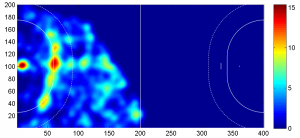Date: 16 November 2011
Time: 12.30-13.30
Place: NJ14
Music for the lute and its relatives played a central role in the European cultural landscape for centuries until the rise of the piano in the late 18th Century saw its decline. That the music remains little known and under-represented in music histories is perhaps due almost entirely to its notation — the tablatures used are very different to the staff notation used for most other music of the time.
In my talk, I introduce the music and its notation and describe a proposed project to use Optical Music Recognition technologies currently being developed to digitise the complete printed lute music holdings of several libraries. Amateur lutenists and enthusiasts would then be recruited to correct and edit the resulting collection online, resulting in a large, searchable resource, which could make the music available in forms that are more accessible to non-specialists or that are capable of machine-analysis.
Bio
David Lewis trained as a historical musicologist at Kings College, London. He has since specialised in developing computer tools for musicologists or musicians. He is currently based at the Birmingham Conservatoire, where he is developing a score editor and technical infrastructure for a new complete edition and translation of the theoretical works of Johannes Tinctoris (building on earlymusictheory.org/tinctoris/tinctoris.html), and at Goldsmiths, University of London, where he has worked on a lute music corpus (www.ecolm.org) and a general-purpose music-processing framework called AMusE. He is also a doctoral student in the Goldsmiths computing department.
